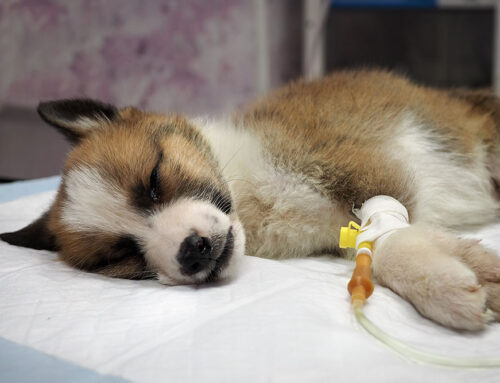#1: Fleas and ticks go to amazing lengths to find a host.
Fleas have six powerful legs that allow them to jump distances 200 times their body length—over 12 inches—onto a host. Their jumping power is the equivalent of a human leaping 1,200 feet.
Instead of jumping, a tick waits on the end of a leaf or blade of grass with its front legs outstretched and grabs onto an unsuspecting animal or person walking by.
Both arthropods have sensitive sensory perception, which allows them to detect changes in heat, moisture, light, vibrations, and carbon dioxide levels that indicate a possible host is present.
#2: Both fleas and ticks make a meal of your pet’s blood.
Fleas and ticks take up residence on your pet to secure their next meal: blood. Fleas live their adult lives on an animal and feed frequently on small amounts of blood.
Ticks, on the other hand, attach to an animal for a few hours to a few days and feed continuously. When it has finished feeding, the tick detaches, falls off the animal, and lives in the environment.
Although each flea or tick ingests only a small amount of blood, severe infestation can cause anemia. Small kittens or puppies can lose enough blood to cause death.
#3: Pets often have no clue they are harboring stow-away pests.
When a tick finds the perfect place to feed, it incises the animal’s skin, inserts its feeding tube, and bites. Because the tick secretes a small amount of saliva that contains anesthetic-like properties as it bites. the host does not feel pain or itch, allowing ticks to feed undetected for up to several days.
#4: Fleas and ticks can transmit dangerous diseases.
Fleas and ticks can pick up diseases with the blood they ingest. When they feed on other hosts, they leave behind a small amount of saliva containing the bacterial or viral pathogens and transmit the disease.
Diseases transmitted by fleas include:
- Tapeworms
- Cat scratch disease
- Murine typhus
- Mycoplasma haemofelis
Diseases transmitted by ticks include:
- Lyme disease
- Rocky Mountain spotted fever
- Powassan virus
- Ehrlichiosis
- Anaplasmosis
#5: Fleas and ticks have complex life cycles.
Adult fleas lay eggs, which hatch into worm-like larvae that feed on organic matter and digested blood the adults leave behind. Larvae pupate and transform into adult fleas inside a cocoon. Their life cycle can span from a few weeks to several months, depending on environmental conditions. Newly emerged adult fleas must feed before they can lay eggs.
Ticks also lay eggs, which hatch into tiny larvae that develop into nymphs and then adults. The larva and nymph stages are smaller versions of the adult tick. Ticks must find a host and feed at least once at each stage to survive. Their life cycle can take up to three years to complete.

#6: A few adult fleas can multiply to an infestation in no time.
The adult fleas crawling on your pet represent only 5 percent of the total population, with eggs (50 percent), larvae (35 percent), and pupae (10 percent) making up the other 95 percent. This means that for each adult flea you can see, 19 others are lurking in your home’s carpet, bedding, and furniture.
A female flea can lay up to 50 eggs each day, so your flea population can grow quickly. Treating a flea infestation involves eliminating the pests in your environment at every life stage, and killing the adult fleas on your pet.
#7: Pets can be allergic to flea bites.
Most animals develop an itchy bump from the saliva that fleas leave behind after each bite. Some dogs and cats experience a more severe reaction, called flea allergy dermatitis (FAD), where a single flea bite causes an intensely itchy rash that requires veterinary treatment. If your pet has FAD, strict flea control is critical.
#8: The threat doesn’t die in the winter.
Although fleas cannot survive below-freezing temperatures, a few may overwinter on hosts and in sheltered areas, such as wild animal dens and under buildings. Reproduction slows down considerably, but gains speed again in spring and summer.
The tick life cycle takes 2 to 3 years. Many species require a winter to develop from larva to nymph stage, and they will survive the freezing temperatures in insulated areas like leaf litter. When temperatures rise, ticks become active again and search for their next host.
Year-round prevention is critical to keep fleas and ticks at bay. Speak to our veterinary team about products that best fit your pet’s needs.








Leave A Comment